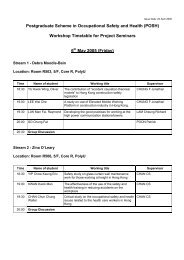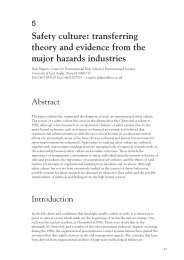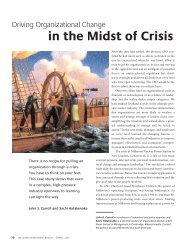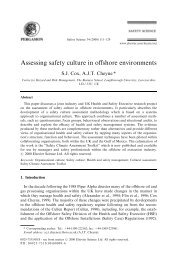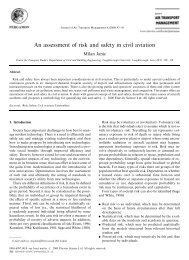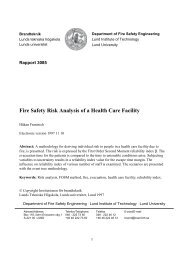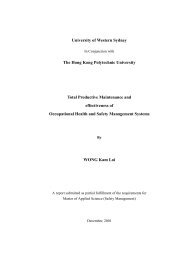Safety Culture Improvement Matrix - Industrial Centre
Safety Culture Improvement Matrix - Industrial Centre
Safety Culture Improvement Matrix - Industrial Centre
Create successful ePaper yourself
Turn your PDF publications into a flip-book with our unique Google optimized e-Paper software.
• commitment is demonstrated by the behaviour and decisions of leaders at all levels in theorganisation. As such they recognise that accidents, ill health and incidents can result fromfailings in management control and not just from faults of individual employees. HenceLeaders are aware of their obligation to give strong and active commitment to safety, and toprovide clear definition of the boundaries of acceptable behaviour, and to lead by example• senior management are involved directly in the review of serious incidents and decisions onthe remediation of their causes but not in a manner that stifles the openness of theinvestigation1.3 INTERNAL COMMUNICATIONSDo the leaders explain their commitment to safety to the staff and appreciate the importance ofhaving good safety communications?Not at allFor example:To some extent Moderately MostlyFully• leaders participate in setting safety targets and explaining these to staff• there is a mix of formal and informal means of communication between leaders and theworkforce• safety committees act as joint working parties, looking at strategic issues• there is a swift response from management to concerns and queries raised by the workforceand/or other managers• managers and supervisors discuss “shop floor” safety matters with the workforce, listeningto concerns and queries• leaders display fairness and prudence when evaluating safety performance, violations,errors, poor behaviour etc• leaders adopt a democratic and listening style of management rather than an authoritarianstyle• safety practitioners have a means of direct communication with leaders• the workforce have means of communicating concerns and queries to leaders, such asanonymous reporting, safety committees, safety representatives, routine meetings withmanagement:• leaders clearly explain safety goals and objectives to their staff• managers and supervisors take an interest in the personal as well as the work problems oftheir subordinates.• leaders discuss any safety concerns the staff may have and hold group discussions to findsolutions to the safety problem.• leaders keep their staff informed about outcomes of any meetings regarding safety matters.3






